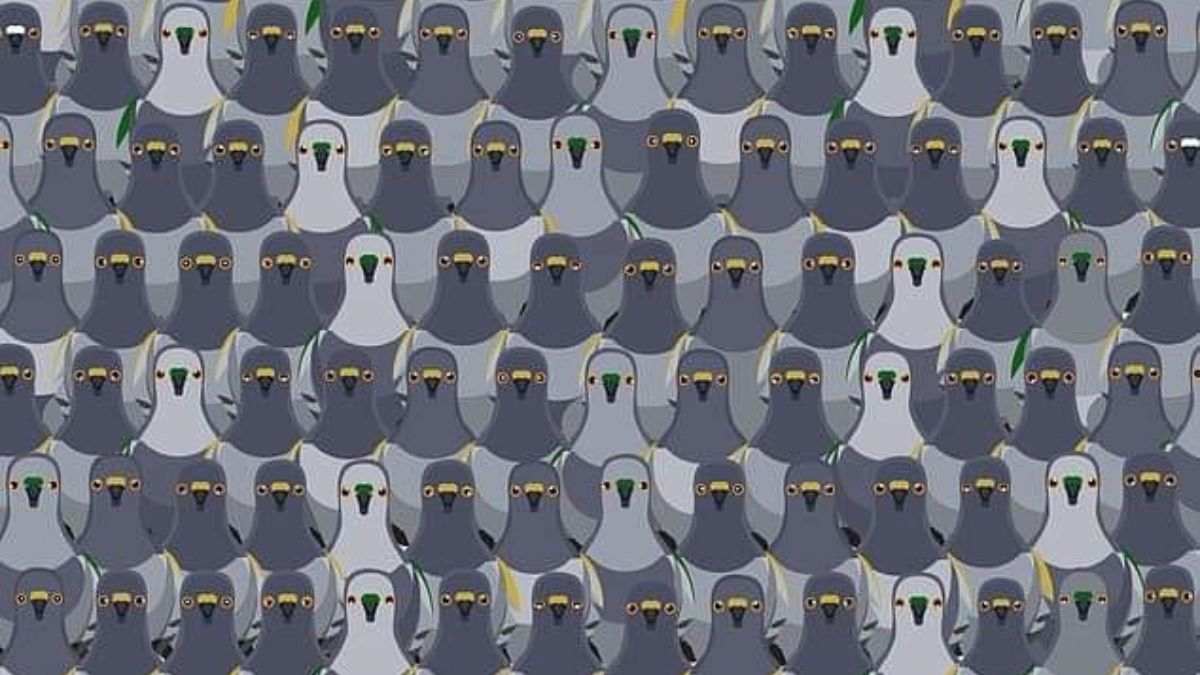Optical illusions have always fascinated the human mind, challenging our perception and cognitive abilities.
They play tricks on our brains, presenting images that deceive our senses and make us question reality.
Among the myriad of optical illusions that exist, there are some that not only captivate us but also serve as tests for our intelligence quotient (IQ).
One such intriguing illusion is the challenge of spotting a hidden cat among a flock of pigeons in a picture, with the claim that only 1% of individuals can accomplish this feat within 7 seconds.
In this article, we delve into the phenomenon of optical illusions, explore the intricacies of this particular challenge, and unravel the cognitive processes behind spotting the elusive feline.
Understanding Optical Illusions:

Optical illusions are visual phenomena that occur when our brains misinterpret the information received from our eyes.
They exploit the way our visual system processes images, often leading to discrepancies between what we perceive and what is actually present in the physical world.
These illusions can manifest in various forms, including geometric patterns, ambiguous figures, and illusions of motion.
The key to understanding optical illusions lies in comprehending the principles of visual perception.
Our brains rely on a combination of sensory inputs, past experiences, and cognitive processes to interpret visual stimuli.
However, these interpretations are not always accurate, as our brains often take shortcuts or make assumptions based on limited information.
Optical illusions exploit these inherent tendencies, leading to perceptual distortions that challenge our understanding of reality.
The Cat Among Pigeons Challenge:
The “Cat Among Pigeons” challenge is a prime example of an optical illusion that tests our cognitive abilities.
The premise is simple: participants are presented with an image depicting a group of pigeons, among which a solitary cat is concealed.
The task is to identify the cat within a specified time limit, typically set at 7 seconds, with the claim that only a small percentage of individuals can successfully accomplish this task within the allotted time frame.
At first glance, the image appears to be nothing more than a typical scene of pigeons gathered in a public square or park.
However, upon closer inspection, keen observers may notice subtle clues that hint at the presence of the hidden cat.
These clues may include differences in texture, shape, or coloration that distinguish the cat from the surrounding pigeons.
Additionally, strategic positioning within the composition may aid in camouflaging the cat amidst its avian counterparts.
The Cognitive Challenge:
Spotting the hidden cat within the “Cat Among Pigeons” illusion requires a combination of visual acuity, attention to detail, and rapid cognitive processing.
Participants must quickly scan the image, analyze the visual information, and discern patterns or anomalies that deviate from the expected scene of pigeons.
This task engages various cognitive processes, including visual perception, pattern recognition, and attentional focus.
One of the primary cognitive processes at play is known as visual search, which involves scanning a visual scene to locate a specific target among distractors.
In the case of the “Cat Among Pigeons” illusion, participants must efficiently search through a complex array of visual stimuli to isolate the concealed cat.
This process requires the ability to filter out irrelevant information while attending to relevant cues that indicate the presence of the target.
Furthermore, the challenge imposes a time constraint, adding an element of urgency and cognitive pressure.
Participants must make rapid decisions and rely on intuition and instinct to guide their search efforts within the limited time frame.
This time pressure can amplify the cognitive load and heighten the challenge of detecting the hidden cat amidst the pigeons.
Implications for IQ Testing:
While optical illusions such as the “Cat Among Pigeons” challenge are primarily intended for entertainment and amusement, they also offer insights into cognitive abilities and intelligence.
Performance on tasks involving visual perception and problem-solving can provide valuable indicators of cognitive aptitude and mental agility.
In the case of the “Cat Among Pigeons” illusion, the ability to quickly identify the hidden cat may correlate with factors such as perceptual speed, attentional control, and spatial reasoning skills.
However, it is essential to approach claims about IQ testing with caution, as performance on a single task does not provide a comprehensive measure of intelligence.
IQ tests typically encompass a wide range of cognitive domains, including verbal reasoning, mathematical ability, and logical thinking.
While performance on visual perception tasks may offer valuable insights into certain aspects of intelligence, they should be considered as part of a broader assessment battery rather than definitive measures of IQ.
Conclusion:
The “Cat Among Pigeons” optical illusion serves as a captivating test of visual perception and cognitive prowess.
Its ability to challenge our minds and engage our senses underscores the fascinating complexities of human perception.
As we strive to unravel the mysteries of the mind and unlock the secrets of intelligence, optical illusions continue to captivate our imagination and push the boundaries of our understanding.
So, the next time you encounter a seemingly ordinary image, take a closer look—you might just uncover hidden wonders that defy expectations and expand your perception of reality.
